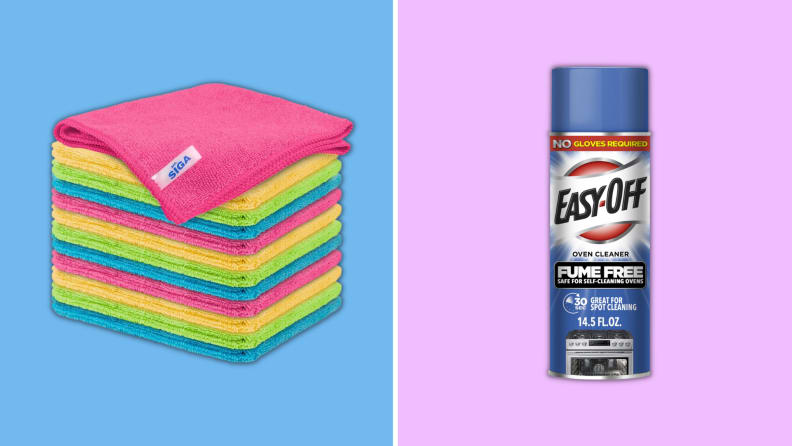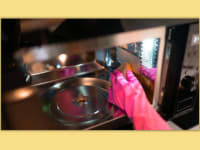Products are chosen independently by our editors. Purchases made through our links may earn us a commission.
Face it, your oven is filthy—but there's no need to be ashamed. It seems like every time you use it some new spill or stain forms and slowly bakes into that once-pristine enameled surface.
Luckily, most ovens include self-cleaning modes that can wipe away all that sticky grease and crusty residue. Even manual cleaning can be made easier with proper maintenance and the right cleaning products.
So are you ready to say goodbye to all that grime? First you need to take stock of your options. Not all ovens are alike, so be sure to check your owner's manual to see what kinds of self-cleaning settings are available to you, as well as what the manufacturer recommends. With that in mind, here's the lowdown on how to clean an oven.
Utilize your oven’s self cleaning function
Pyrolytic cleaning is the most common type of self-clean function, and also probably the easiest. Pyrolytic cleaning raises the oven temperature to a blistering degree—usually between 900°F and 1,000°F. The cycle lasts a few hours and reduces all that grime to ash, which can be easily wiped away once the oven cools.
While there's some variation between ovens, you'll want to remove the oven racks and wipe out any crumbs before running the cycle. Make sure you won't need to cook anything for at least a few hours, as the cleaning mode will lock your oven and render it unusable for the whole period. When the cycle is over, you'll be able to wipe away the remaining debris with a damp cloth. (Just wait until the cavity cools down!)
Not every oven will have this, but some self-clean modes use the power of steam to clean the oven—often alongside a pyrolytic option. These ovens are coated in an enamel that releases grime when it encounters steam and low heat, allowing you to easily wipe it away when the cycle finishes.
The steam clean option tends to work much faster than pyrolytic cleaning (one cycle usually takes under an hour). Furthermore, it doesn’t require nearly as much heat or energy, and it doesn't give off any nasty fumes.
That said, the clean isn't as thorough or effective. If your oven has both pyrolytic and steam self-clean cycles, you may want to run the steam clean on a more routine basis. This will limit the need for the pyrolytic mode, which is more appropriate for big messy stains.
What You’ll Need

An oven cleaner comes in handy if your oven doesn't have a self-cleaning cycle.
How to clean an oven
1. Turn on self-cleaning mode
Whichever self-cleaning mode your oven uses, read your oven’s manual and follow the instructions. Check to see if your oven racks are safe to stay in the oven during the self-cleaning cycle. If not, you’ll want to remove them.
Be prepared to turn on some fans as it will get hot and release a nasty smell.
Pyrolytic cleaning cycles take a couple of hours so plan to clean when you don’t need to use the oven.
2. Let the oven come to cool
Once the cycle has finished, all the built-up grime will have turned to ash or will be released from the walls. All you need to do is take a damp cloth and wipe it away.
You’ll want to be thorough so the ash doesn’t burn up when you go to use your oven next.
3. Use an oven cleaner
If your self-cleaning function didn’t get everything off or your oven doesn’t offer that cycle, turn to an oven cleaner. Oven cleaners need to be used on a completely cool oven so you might need to wait to use it the day after running a self-cleaning cycle.
Oven cleaners, like this one from Easy-Off, sprays on and just needs to sit for an hour. Afterward you can wipe it away and all the grime will come with it.
These cleaners also work well on oven racks if you can’t clean them during the self-cleaning cycle.



